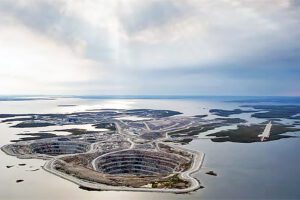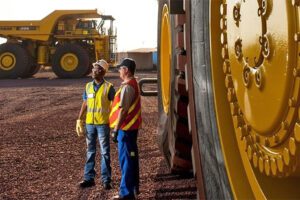NSW’s Chief Scientist and Engineer has found no evidence that current long-wall or coal seam gas activities in the Sydney Water Catchment area should be stopped.
Minister for Resources and Energy Anthony Roberts said the NSW Government is examining two reports it has received from the independent NSW Chief Scientist and Engineer, Professor Mary O’Kane.
Mr Roberts said the first report, Cumulative Impacts on ground and surface water in the Sydney Water Catchment, analysed the impacts of activities in the Sydney Water Catchment, in particular the impact of long wall mining and coal seam gas activities.
“The Chief Scientist and Engineer found no evidence that current long-wall or coal seam gas activities in the Catchment should be stopped,” Mr Roberts said.
“Instead, the report found modern treatment processes are sufficient in protecting the quality of Sydney’s drinking water against any adverse impact.”
Professor O’Kane said, “The current cautionary approach by Government agencies seems to be preventing development that could cause obvious disastrous cumulative impacts, and therefore there is no reason to stop long wall mining immediately.”
Mr Roberts said the Chief Scientist and Engineer’s report vindicates the NSW Government’s measured and balanced approach to growing the resources industry.
“We must protect future generations by ensuring we have a science-based, balanced approach to securing a safe, sustainable and affordable energy future,” he said.
“Professor O’Kane also strongly recommended that a whole-of-government Catchment data repository be created to allow better records to be kept and to generate detailed modelling of the cumulative impacts in the catchment area.
“The NSW Government will maintain its ban on coal seam gas exploration and extraction in Sydney’s water catchment until it fully considers all the recommendations in this latest report and will closely monitor any impacts on the environment.”
Titleholders are currently required to maintain a security deposit which covers the full cost of rehabilitating petroleum exploration or production sites. The deposit must be in the form of cash or bank guarantee.
The security can be called in at any time by the Minister if the titleholder does not meet its rehabilitation obligations. The Office of Coal Seam Gas would then use the security deposit to rehabilitate the site.
The Chief Scientist found that the security deposit system has historically worked well to cover expected costs, but that it only covers one of the three primary levels of risk which need to be addressed in order to establish a comprehensive framework.
The report recommended the NSW Government examine the potential adoption of a three-layered policy of security deposits, enhanced insurance coverage and an environmental rehabilitation fund administered by the Government to cover long term or unforeseen costs.
Mr Roberts said the NSW Government is now examining the recommendations in both reports.
“On behalf of the people of NSW, I would like to thank Professor O’Kane for her hard work and dedication on these topics and the team of experts she brought together to examine impacts on water and water quality,” Mr Roberts said.
The reports can be found at: www.chiefscientist.nsw.gov.au/reports













Add Comment